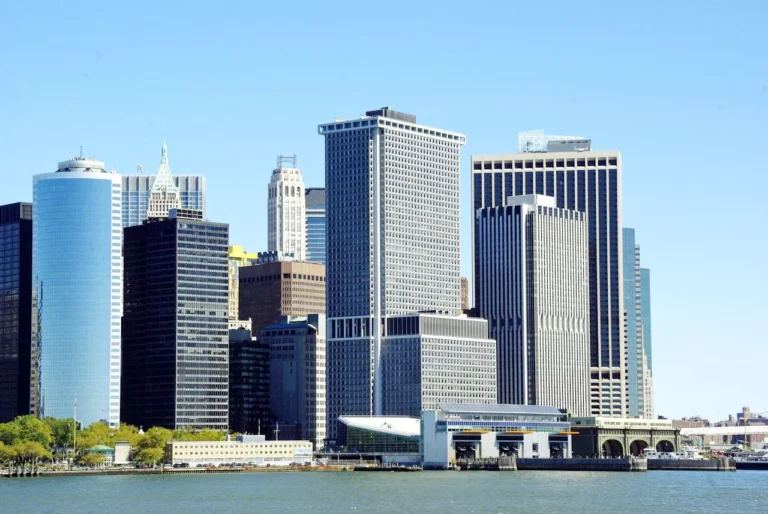
Granite Announces New Construction and Rehabilitation Project at SFO
Granite , a leading construction and infrastructure company, has announced a significant new project in partnership with San Francisco International Airport (SFO), marking a pivotal advancement in the airport’s modernization efforts. Under a Construction Manager/General Contractor (CM/GC) agreement, Granite will be spearheading the Runway 1R-19L Rehabilitation and Taxiway W Construction Project, a high-priority component within SFO’s expansive Capital Improvement Program (CIP).
The Capital Improvement Program is a multi-billion-dollar long-term initiative designed to transform and upgrade the infrastructure at one of the busiest airports in the United States. Through this initiative, SFO aims to meet current and future aviation demands while maintaining its award-winning service and operational excellence. The inclusion of Granite in this effort further reinforces the airport’s commitment to working with experienced partners to ensure safety, quality, and sustainability.
Project Scope and Timeline
The Runway 1R-19L Rehabilitation and Taxiway W Construction Project is a comprehensive effort to enhance both airfield performance and safety. Granite’s responsibilities will involve extensive civil engineering work that includes the resurfacing of a key runway and the construction of a new taxiway, along with a range of associated infrastructure upgrades.
The overall project will unfold in two distinct phases:
- Preconstruction Phase: Scheduled to take place from June 2025 through January 2026, this phase will focus on finalizing design, logistics, procurement planning, stakeholder coordination, and securing necessary permits and environmental clearances.
- Major Construction Phase: Set to begin in March 2026 and continue through November 2026, this phase will involve large-scale mobilization, runway closure scheduling, full implementation of construction operations, and rigorous coordination with airport authorities to minimize air traffic disruption.
The primary work includes:
- Runway 1R-19L Rehabilitation: The full rehabilitation of this runway will include resurfacing with hot mix asphalt (HMA), restoring structural integrity, and ensuring compliance with Federal Aviation Administration (FAA) standards for performance and safety.
- Taxiway W Construction: A new section of Taxiway W will be constructed to link Taxiway A to Taxiway L, thereby improving aircraft movement efficiency and reducing taxiing time.
- Demolition of Taxiway F1: As part of the redesign and optimization of aircraft movement paths, Taxiway F1 will be demolished and replaced with new, more functional airside infrastructure.
Infrastructure Enhancements

In addition to paving and structural work, the project encompasses a wide range of enhancements to airfield systems and operational components. These include:
- Lighting Infrastructure: Installation of advanced airfield lighting systems, improving visibility and operational safety in varying weather and lighting conditions.
- Runway Status Lights (RWLS): These automated lighting systems, crucial for preventing runway incursions, will be integrated to provide pilots with real-time visual signals.
- Drainage Systems: Modern drainage solutions will be deployed to improve surface water management, reducing the potential for hydroplaning and improving runway usability during heavy rain.
- Signage and Markings: New signage, grooving, and airfield striping will be applied to meet FAA specifications and optimize navigation for pilots and ground crews.
- Environmental Mitigation: As with all modern construction projects, environmental stewardship will be a top priority. Measures will be taken to ensure minimal impact on surrounding ecosystems and airport operations, including noise mitigation, dust control, and sustainable material sourcing.
Granite’s Commitment and Operational Role
Granite’s Vice President of Regional Operations, Brent Fogg, expressed pride in the company’s selection for this important project and emphasized the team’s commitment to collaboration, quality, and efficiency.
“We are committed to building a lasting collaboration with SFO and all stakeholders to deliver this critical infrastructure efficiently and effectively, while minimizing disruptions for both employees and SFO passengers,” said Fogg. “We are honored to partner with the exceptional SFO team to enhance the airfield and uphold SFO’s reputation as the Best Airport in North America.”
Granite will play a central role not only in construction execution but also in preconstruction planning, cost estimating, risk mitigation, and scheduling. This CM/GC delivery model is especially suited to complex airport projects where early contractor involvement can greatly benefit constructability reviews, phasing plans, and overall project coordination.
Material Sourcing and Sustainability
A significant volume of high-performance asphalt will be required to meet the structural and performance needs of the rehabilitated runway and new taxiway. Granite will supply approximately 185,000 tons of P401 and P403 mix hot mix asphalt through its Santa Clara Asphalt facility, which is strategically located to ensure efficient delivery and reduced environmental impact from transportation.
Granite’s Santa Clara facility is known for its modern production capabilities, commitment to recycled materials, and adherence to strict environmental guidelines. The use of durable, FAA-compliant asphalt mixtures like P401 and P403 ensures long-lasting pavement that can withstand the high loads and constant use typical of major airport runways.
Project Value and Financial Overview
The total anticipated construction value for the Runway 1R-19L Rehabilitation and Taxiway W Construction Project is estimated to be $115 million, making it one of the most significant aviation infrastructure contracts in the region for the 2025–2026 period.
This value has already been included in Granite’s second-quarter 2025 Committed and Awarded Projects (CAP) backlog, reflecting the company’s robust pipeline and its strategic positioning in the public infrastructure and transportation sectors.
Impact on SFO and Broader Aviation Goals
Upon completion, this project is expected to deliver substantial benefits to the San Francisco International Airport, including:
- Increased airside operational efficiency
- Improved safety and compliance with the latest FAA and ICAO standards
- Extended service life of runway and taxiway infrastructure
- Reduced congestion during taxiing and gate departures
- Enhanced resilience of airfield systems to inclement weather and climate variability
More broadly, this initiative aligns with national priorities in airport modernization and sustainable infrastructure, supported in part by the FAA’s Airport Improvement Program (AIP) and potential funding opportunities under the federal Bipartisan Infrastructure Law.




